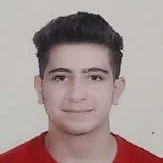International Journal of Mathematical Sciences and Computing (IJMSC)
IJMSC Vol. 6, No. 3, 8 Jun. 2020
Cover page and Table of Contents: PDF (size: 378KB)
A Comparative Study Between Epoxy S-Glass UD And Epoxy Carbon UD For Their Use As Manufacturing Materials For Wind Turbine Blades
Full Text (PDF, 378KB), PP.33-41
Views: 0 Downloads: 0
Author(s)
Index Terms
Wind turbine, Composite materials, Epoxy, Glass fiber, Carbon fiber, Finite element analysis.
Abstract
The majority of failure cases may occur because of the wrong selection of inappropriate material in the manufacture of wind turbine blades. Composites are used to increase reliability and reduce wind turbine manufacturing costs. Therefore, this research focuses on comparing the use of Epoxy S-Glass UD and Epoxy Carbon UD as manufacturing materials for wind turbine blades using 3D finite element analysis; to find out which of these materials have the best performance for its use as a manufacturing material for wind turbine blades. The distribution of Von Mises stresses in wind turbine blade models was investigated using Epoxy S-Glass UD and Epoxy Carbon UD under the wind loads that affect the blade of the turbine. The results showed that the value of the maximum stresses in the epoxy glass model was 3.495 × 107 Pa, while this value was in the epoxy carbon model 4.0494 × 107 Pa. As for the value of the minimum stresses, it was in the epoxy glass model 7431.8 Pa, while the value in another material model 17323 Pa. Therefore, it is not recommended to use Epoxy Carbon UD as a manufacturing material for wind turbine blades, but it is recommended to use Epoxy S-Glass UD, which reduces induced stresses and thus to prolong its lifespan.
Cite This Paper
Hasan Nazha, Zain Aldeen Nazha," A Comparative Study Between Epoxy S-Glass UD And Epoxy Carbon UD For Their Use As Manufacturing Materials For Wind Turbine Blades", International Journal of Mathematical Sciences and Computing(IJMSC), Vol.6, No.3, pp.33-41, 2020. DOI: 10.5815/ijmsc.2020.03.04
Reference
[1] Purwono, B., M., Setiawan, A., Subali Patma, T., Bagus Suardika, I. (2017). The strategy of simulation effects of wind speed, variation of turbine blades and it’s interaction to power generated by vertical axis wind turbine using NACA 2412. International Journal of Engineering & Technology, 7(1.2), 246-250. http://doi.org/10.14419/ijet.v7i1.2.9314
[2] Wong, K. H., Chong, W. T., Poh, S. C., Shiah, Y. C., Sukiman, N. L., Wang, C. T. (2018). 3D CFD simulation and parametric study of a flat plate deflector for vertical axis wind turbine. Renewable energy, 129, 32-55. https://doi.org/10.1016/j.renene.2018.05.085
[3] Albi, Dev Anand, M., M. Joselin Herbert, G. (2018). Aerodynamic Analysis on Wind Turbine Aerofoil. International Journal of Engineering & Technology, 7(3.27), 456-465. http://doi.org/10.14419/ijet.v7i3.27.17997
[4] Khudri Johari, M., Azim A Jalil, M., Faizal Mohd Shariff, M. (2018). Comparison of horizontal axis wind turbine (HAWT) and vertical axis wind turbine (VAWT). International Journal of Engineering & Technology, 7(4.13), 74-80. http://doi.org/10.14419/ijet.v7i4.13.21333
[5] Spera, D. A. (2009). Wind turbine technology: fundamental concepts of wind turbine Engineering, Second Edition. New York: ASME press. 1- 832. https://doi.org/10.1115/1.802601
[6] Panduranga, R., Alamoudi, Y., Ferrah, A. (2019). Nanoengineered Composite Materials for Wind Turbine Blades. In 2019 Advances in Science and Engineering Technology International Conferences (ASET) (pp. 1-7). IEEE. https://doi.org/10.1109/ICASET.2019.8714217
[7] Author Kong, C., Bang, J., Sugiyama, Y. (2005). Structural investigation of composite wind turbine blade considering various load cases and fatigue life. Energy, 30(11-12), 2101-2114. https://doi.org/10.1016/j.energy.2004.08.016
[8] Benham, A., Thyagarajan, K., John Sylvester, J., Prakash, S. "Structural Analysis of a Wind Turbine Blade", Advanced Materials Research, Vol. 768, pp. 40-46, 2013. https://doi.org/10.4028/www.scientific.net/AMR.768.40
[9] Song, F., Ni, Y., & Tan, Z. (2011). Optimization design, modeling and dynamic analysis for composite wind turbine blade. Procedia Engineering, 16, 369-375. https://doi.org/10.1016/j.proeng.2011.08.1097
[10] Cousins, D. S., Suzuki, Y., Murray, R. E., Samaniuk, J. R., & Stebner, A. P. (2019). Recycling glass fiber thermoplastic composites from wind turbine blades. Journal of cleaner production, 209, 1252-1263. https://doi.org/10.1016/j.jclepro.2018.10.286
[11] Patel, M. H., & Garrad, A. D. (1990). The development of a finite element method for the dynamic analysis of wind turbines. In 12th British Wind Energy Association Conf (p. 315-318).
[12] El Chazly, N. M. (1993). Static and dynamic analysis of wind turbine blades using the finite element method. Renewable Energy, 3(6-7), 705-724. https://doi.org/10.1016/0960-1481(93)90078-U
[13] Kong, C., Kim, T., Han, D., & Sugiyama, Y. (2006). Investigation of fatigue life for a medium scale composite wind turbine blade. International journal of Fatigue, 28(10), 1382-1388. https://doi.org/10.1016/j.ijfatigue.2006.02.034
[14] Bazilevs, Y., Hsu, M. C., Kiendl, J., Wüchner, R., & Bletzinger, K. U. (2011). 3D simulation of wind turbine rotors at full scale. Part II: Fluid–structure interaction modeling with composite blades. International Journal for numerical methods in fluids, 65(1‐3), 236-253. https://doi.org/10.1002/fld.2454
[15] Brøndsted, P., Lilholt, H., & Lystrup, A. (2005). Composite materials for wind power turbine blades. Annu. Rev. Mater. Res., 35, 505-538. https://doi.org/10.1146/annurev.matsci.35.100303.110641
[16] Thomsen, O. T. (2009). Sandwich materials for wind turbine blades-present and future. Journal of Sandwich Structures & Materials, 11(1), 7-26. https://doi.org/10.1177/1099636208099710
[17] Mishnaevsky Jr, L., Brøndsted, P., Nijssen, R., Lekou, D. J., & Philippidis, T. P. (2012). Materials of large wind turbine blades: recent results in testing and modeling. Wind Energy, 15(1), 83-97. https://doi.org/10.1002/we.470
[18] Mishnaevsky, L., Branner, K., Petersen, H. N., Beauson, J., McGugan, M., & Sørensen, B. F. (2017). Materials for wind turbine blades: an overview. Materials, 10(11), 1285. https://doi.org/10.3390/ma10111285
[19] Darwich, A., Nazha, H., & Abbas, W. (2019). Numerical study of stress shielding evaluation of hip implant stems coated with composite (carbon/PEEK) and polymeric (PEEK) coating materials. Biomedical Research, 30(1), 169-174. https://doi.org/10.35841/biomedicalresearch.30-18-1048
[20] Lanting, Z. (2012). Research on structural lay-up optimum design of composite wind turbine blade. Energy Procedia, 14, 637-642. https://doi.org/10.1016/j.egypro.2011.12.988
[21] Oganesyan, P., Zhilyaev, I., Shevtsov, S., & Wu, J. K. (2016). Optimized design of the wind Turbine’s composite blade to flatten the stress distribution in the mounting areas. In The Latest Methods of Construction Design (pp. 335-341). https://doi.org/10.1007/978-3-319-22762-7_50
[22] Beer, F. P., Johnston, E. R. (1981) Mechanics of materials. New York: McGraw-Hill, 616 pp.
[23] Seidel, C., Jayaram, S., Kunkel, L., & Mackowski, A. (2017). Structural Analysis of Biologically Inspired Small Wind Turbine Blades. International Journal of Mechanical and Materials Engineering, 12(1), 19. https://doi.org/10.1186/s40712-017-0085-3
[24] Park, H. (2017). Structural Design and Analysis of Wind Turbine Blade with Skin-Spar-Sandwich Composite Structure. DEStech Transactions on Engineering and Technology Research, (apetc 2017), 2056-2060. https://doi.org/10.12783/dtetr/apetc2017/11425

